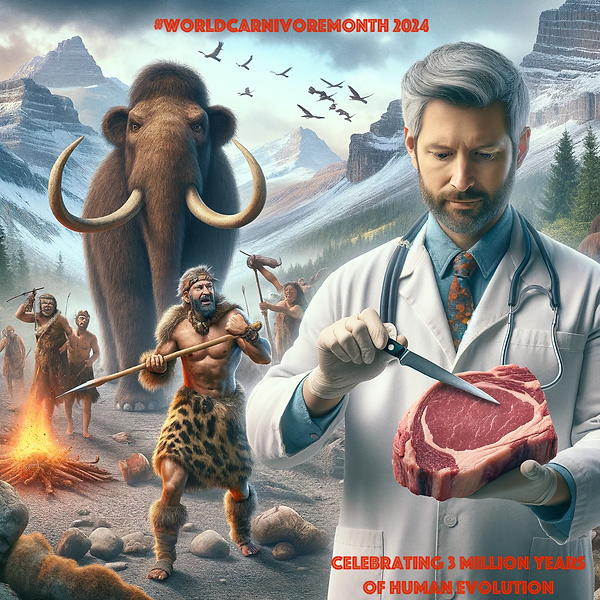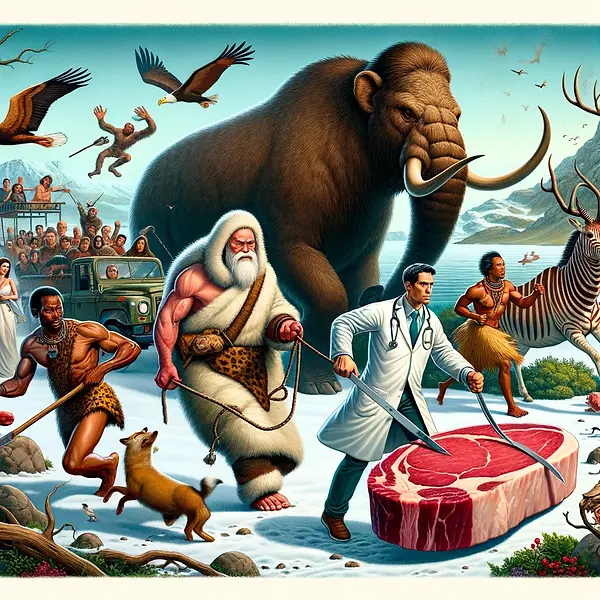


Title:
Carnivore Connection of Insulin Resistance
Abstract:
The 'carnivore connection'--evolutionary aspects of insulin resistance
Details
The 'carnivore connection'--evolutionary aspects of insulin resistance
Abstract
Insulin resistance is common and is determined by physiological (aging, physical fitness), pathological (obesity) and genetic factors. The metabolic compensatory response to insulin resistance is hyperinsulinaemia, the primary purpose of which is to maintain normal glucose tolerance. The 'carnivore connection' postulates a critical role for the quantity of dietary protein and carbohydrate and the change in the glycaemic index of dietary carbohydrate in the evolution of insulin resistance and hyperinsulinaemia. Insulin resistance offered survival and reproductive advantages during the Ice Ages which dominated human evolution, during which a high-protein low-carbohydrate diet was consumed. Following the end of the last Ice Age and the advent of agriculture, dietary carbohydrate increased. Although this resulted in a sharp increase in the quantity of carbohydrate consumed, these traditional carbohydrate foods had a low glycaemic index and produced only modest increases in plasma insulin. The industrial revolution changed the quality of dietary carbohydrate. The milling of cereals made starch more digestible and postprandial glycaemic and insulin responses increased 2-3 fold compared with coarsely ground flour or whole grains. This combination of insulin resistance and hyperinsulinaemia is a common feature of many modern day diseases. Over the last 50 y the explosion of convenience and takeaway 'fast foods' has exposed most populations to caloric intakes far in excess of daily energy requirements and the resulting obesity has been a major factor in increasing the prevalence of insulin resistance.
Hypothesis:
In ketosis, adaptive glucose sparing (i.e. physiological insulin resistance) occurs and is typical of carnivores




